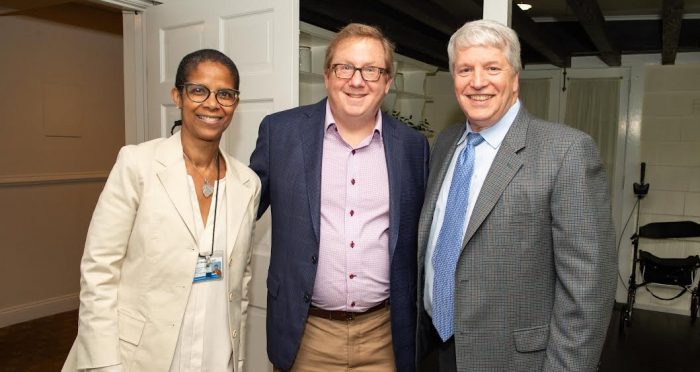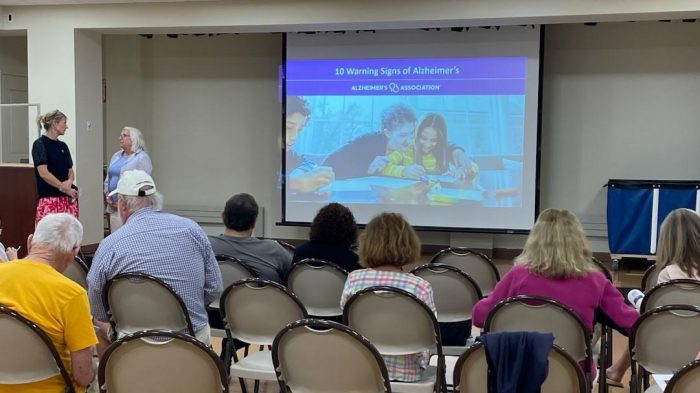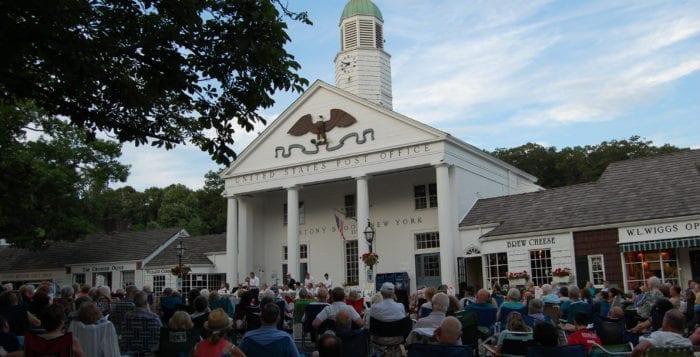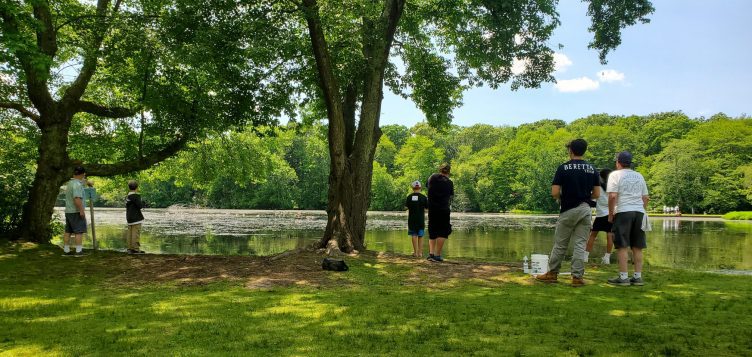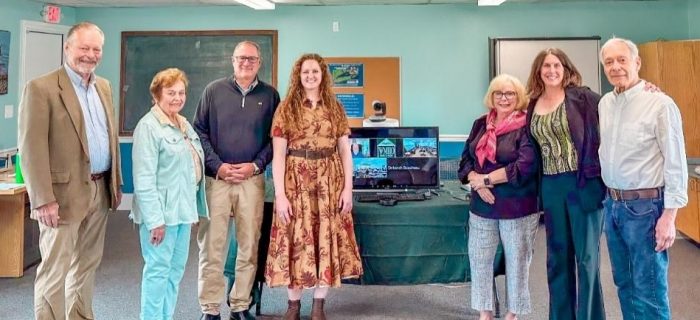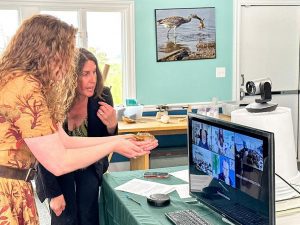In 2010, Stony Brook Heart Institute’s Ventricular Assist Device (VAD) Program was established on Long Island to implant this life saving device. A VAD, also often called a left ventricular assist device or LVAD, is a surgically implanted, battery powered pump that, by supporting the lower left ventricle (the heart’s main pumping chamber), helps a failing heart to do its job more efficiently. The VAD can be used as an intermediary step before heart transplantation or, in patients who, due to advanced age or medical condition are not transplant candidates, as a long-term “destination” device.

Now 10+ years later, patients, their families and medical staff from the Heart Institute gathered on June 15, to celebrate the anniversary of this life saving heart device and program. (The 10-year event was postponed in 2020 due to Covid-19.)
“Nobody knew when we began putting in heart pumps 13 years ago that they would be this durable and reliable,” says Allison McLarty, MD, Surgical Director of the VAD program. “This amazing device has revolutionized the management of advanced heart failure.”
“For the VAD team, there is the immense reward of seeing these extraordinary individuals return to their homes and families with a much better quality of life,” added Marc Goldschmidt, MD, Director, Heart Failure and Cardiomyopathy Center and Medical Director, Ventricular Device Program.
“A VAD program at Stony Brook Heart Institute has been a tremendous asset for both the community and the hospital. Patients with the most complex heart conditions have access right here, close to home, to all the state-of-the-art services they need,” said Hal Skopicki, MD, PhD, Co-Director, Stony Brook Heart Institute and Chief of Cardiology.
Among the patients who attended today’s event was Joseph Cerqueira, 63, who received a VAD in 2017 and a heart transplant the following year. Following his surgery, Joseph returned to his work as a corporate chef.
“Everybody went the extra mile to make me comfortable and knowledgeable on how to adapt to every aspect of life with a VAD,” said Cerqueira. “Now my quality of life is perfect. I still get tired and I know my limitations, but besides that I do whatever has to be done.”
To learn more about the Ventricular Assist Device Program, visit https://heart.

